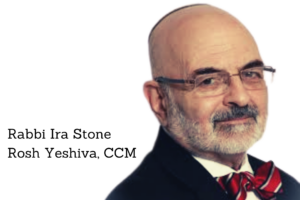 As Pesach draws close, I reflect on the many different forms of slavery that still shackle our world. Some forms of slavery appear distant, other forms are near, integrated into our everyday experience.
As Pesach draws close, I reflect on the many different forms of slavery that still shackle our world. Some forms of slavery appear distant, other forms are near, integrated into our everyday experience.
In the first category, perhaps I would place the ongoing shame of human trafficking. It’s a form of slavery that still thrives in the world but appears distant from my own. In the second category, perhaps I’d place the little addictions that many of us have developed to get us through the stress of the pandemic.
Yet, it seems to me, that the distant and the near forms of slavery are not as disparate as they may appear. In fact, many of our little addictions are supported by the same economic infrastructure that supports the seeming more distant enslavements. In fact, the tragic part of being human is the inability to extract ourselves from the world of slavery entirely. The Pesach seder and the Haggadah are meant to remind us of this tragic fact, even as it celebrates the possibility of what I characterize as a double redemption.
The first redemption celebrates the fact that we are empowered to evaluate our behavior in such a way as to eliminate the habits of self-absorption that bind us in Mitzrayim. The story of the redemption of the Israelites serves as a metaphor for how to put one foot in front of another toward a responsible life; a way to live into our responsibility for others that frees our energy such that we can change our focus from our own concerns toward those seeming distant concerns of our society. To use the seder to achieve this first redemption, indeed, brings an experience of joy.
At the same time, the seder leaves us with the second redemption in abeyance. The longing for a redemption that is not personal but societal; the unfulfilled redemption at the end of the seder that is truly and literally tragic. But it is a sense of the tragic that, in fact, increases our joy by way of expectation. It is the implied relationship between the personal search for redemption and the possibility of affecting the redemption of the other–that expectation ultimately provides the fullest expression of joy which the seder has helped generate throughout generations of Jewish experience. Recovering that sense of joy should be the goal of each of us this year.
Rabbi Joshua Boettiger and I will more fully address this tragic element of the seder and the possibility of joy at the final session of our Pre-Pesach program on March 17th. We hope to see you there.
